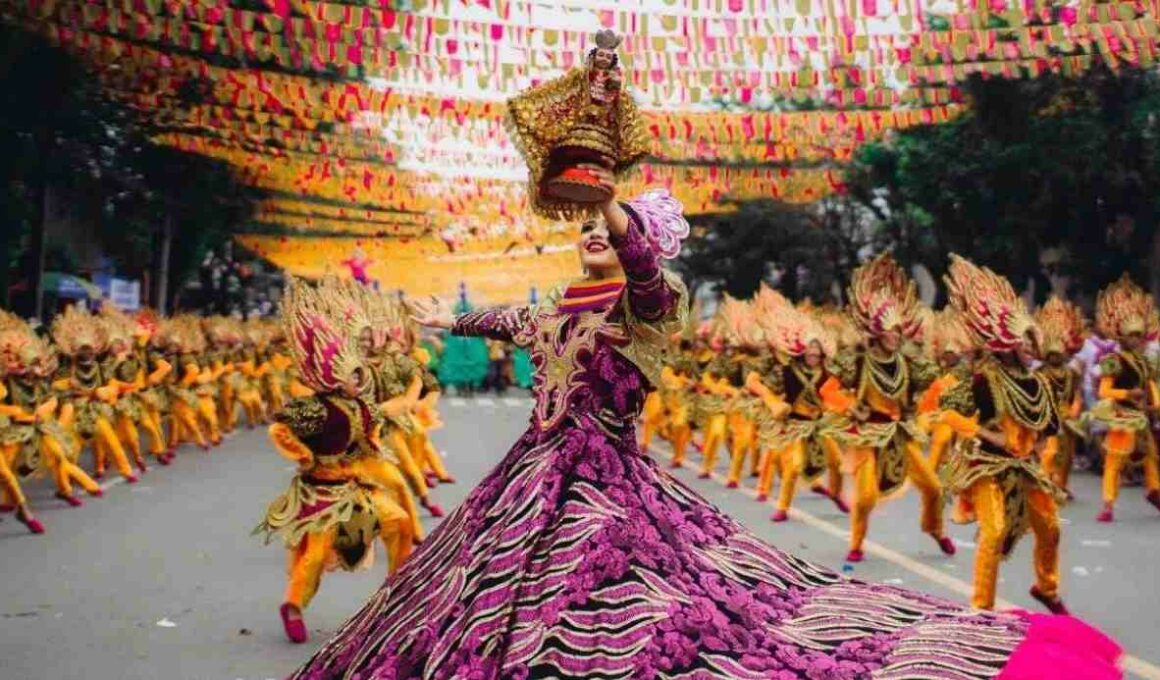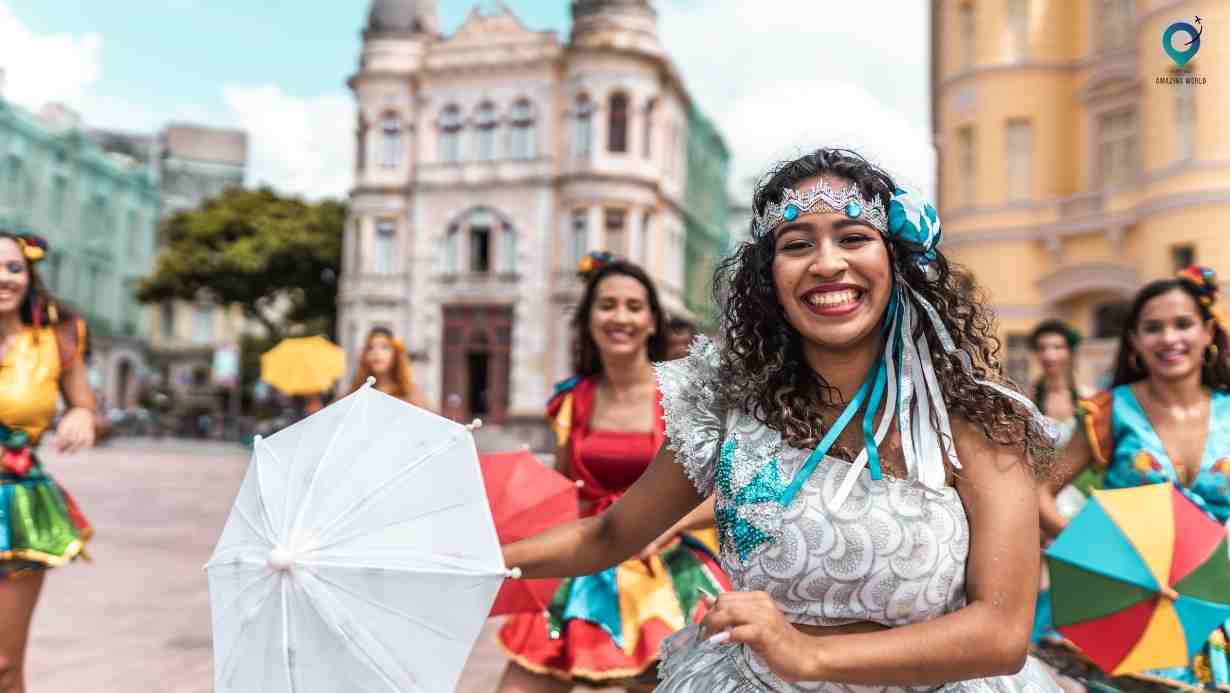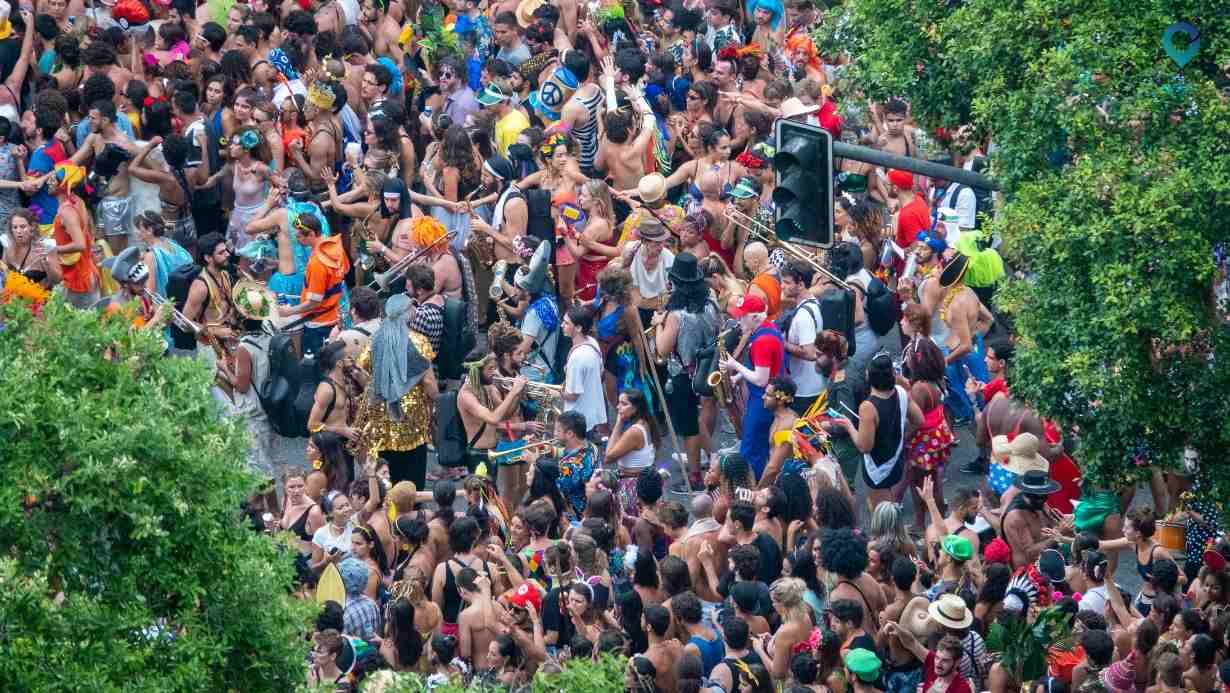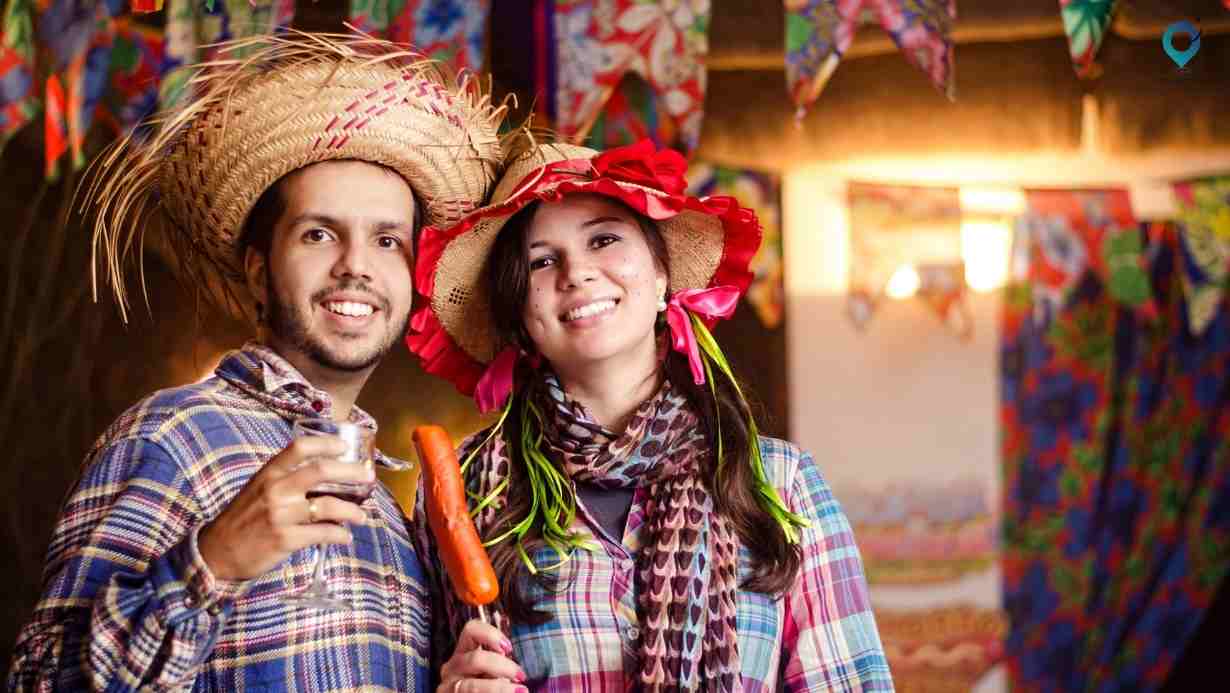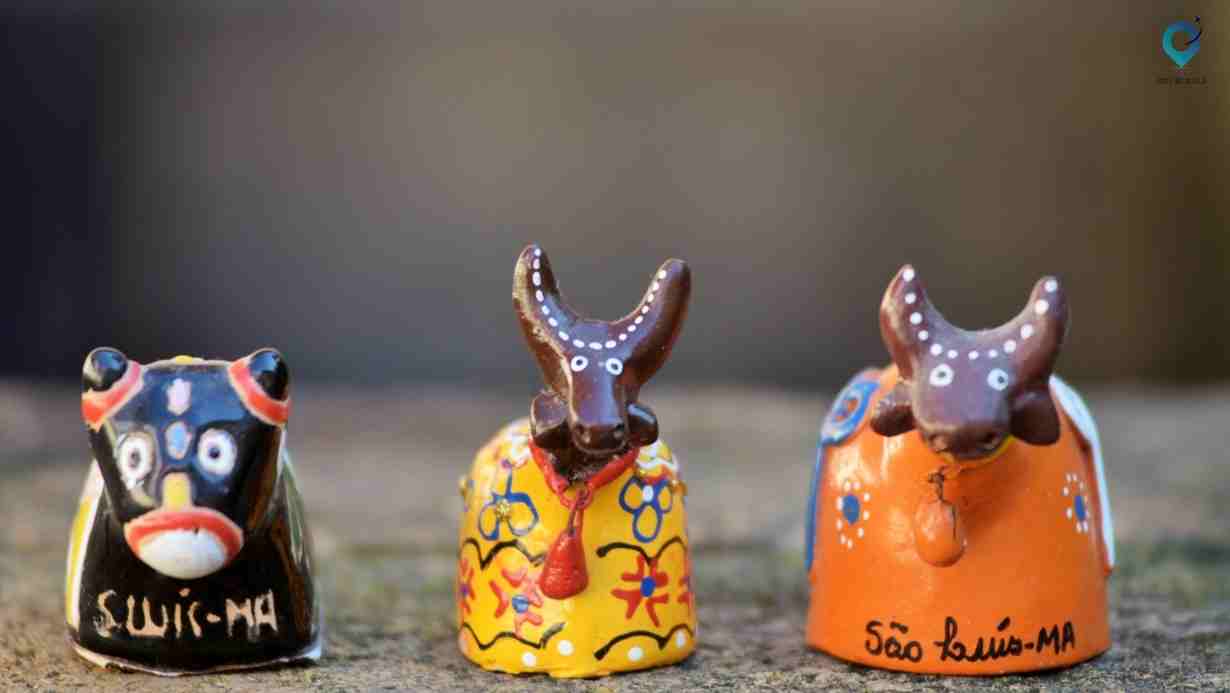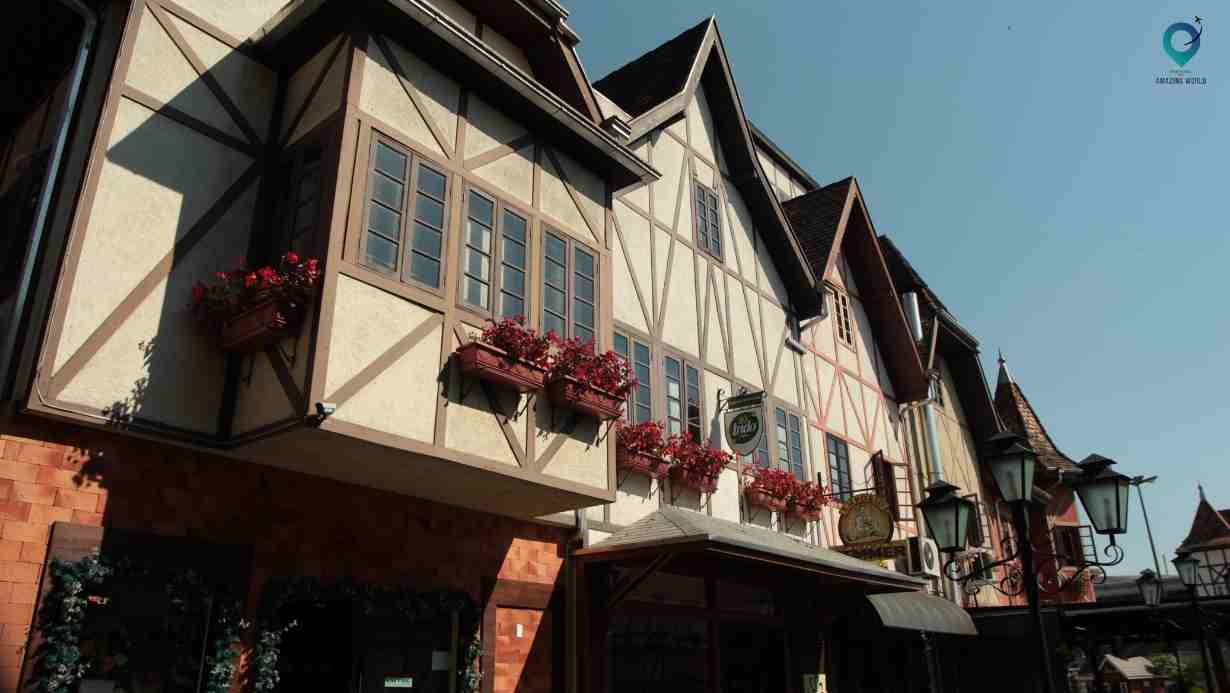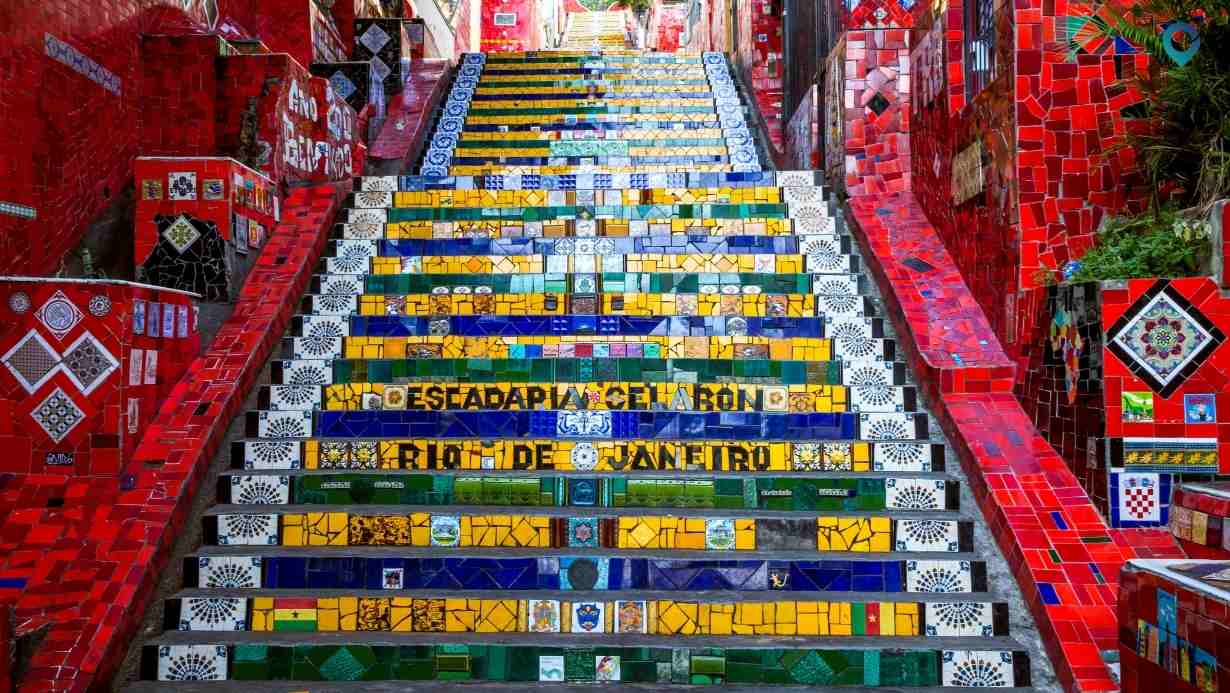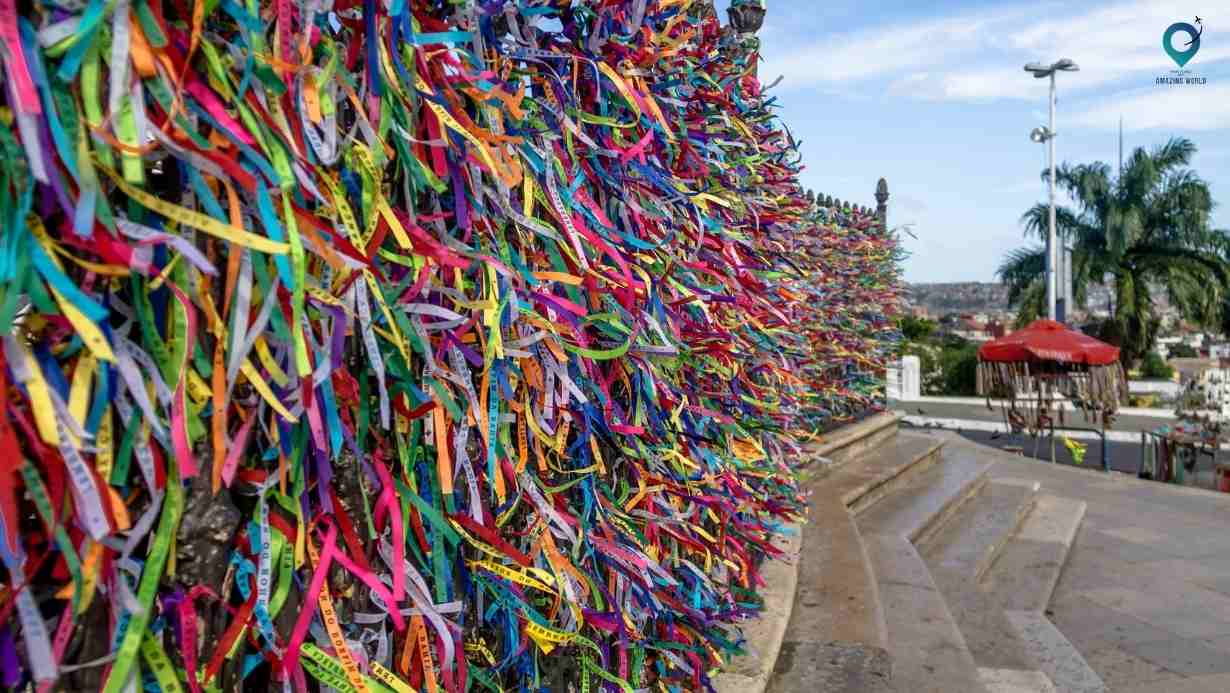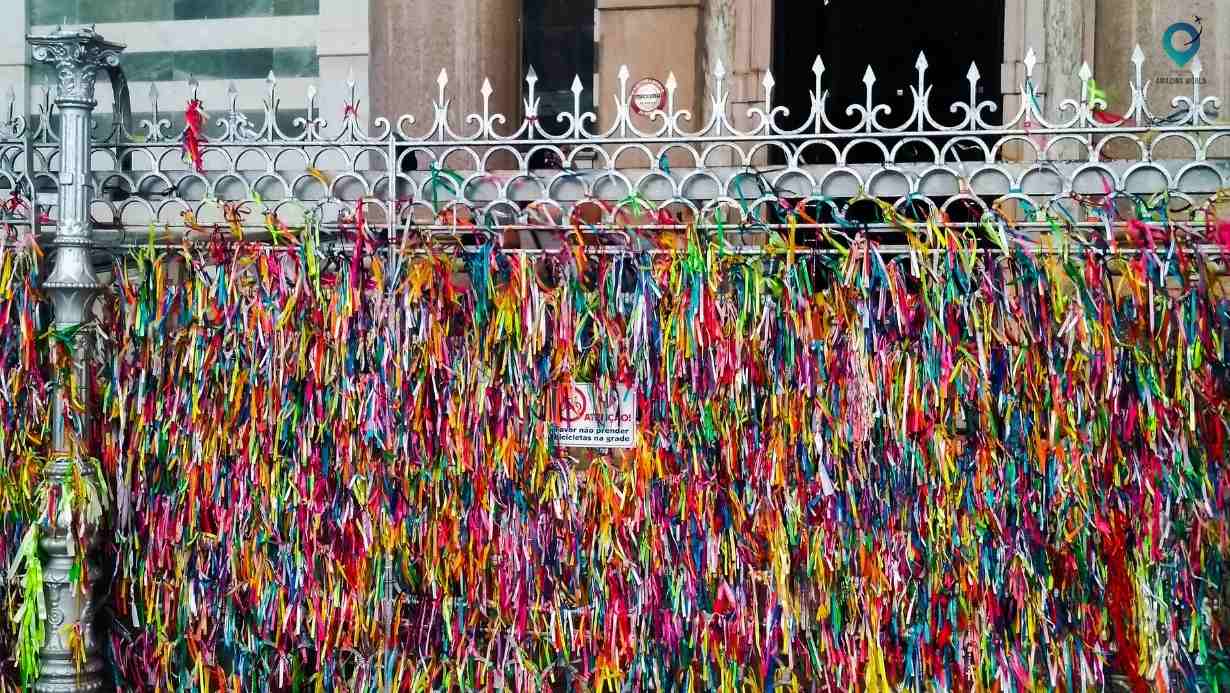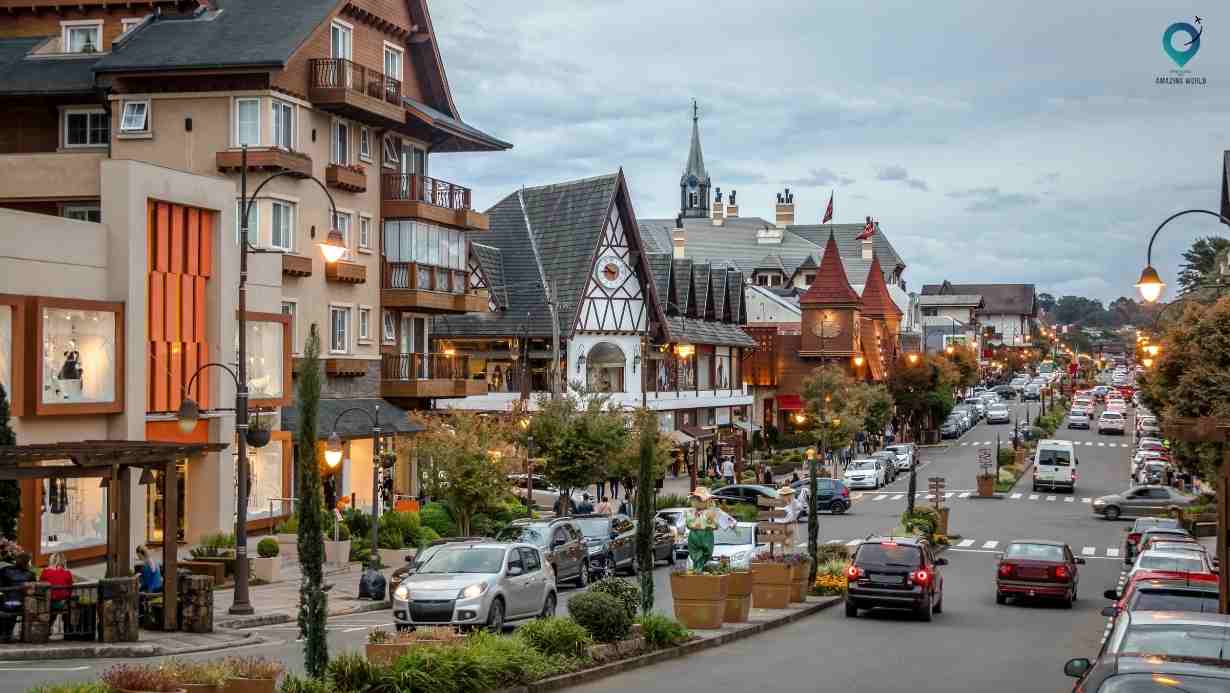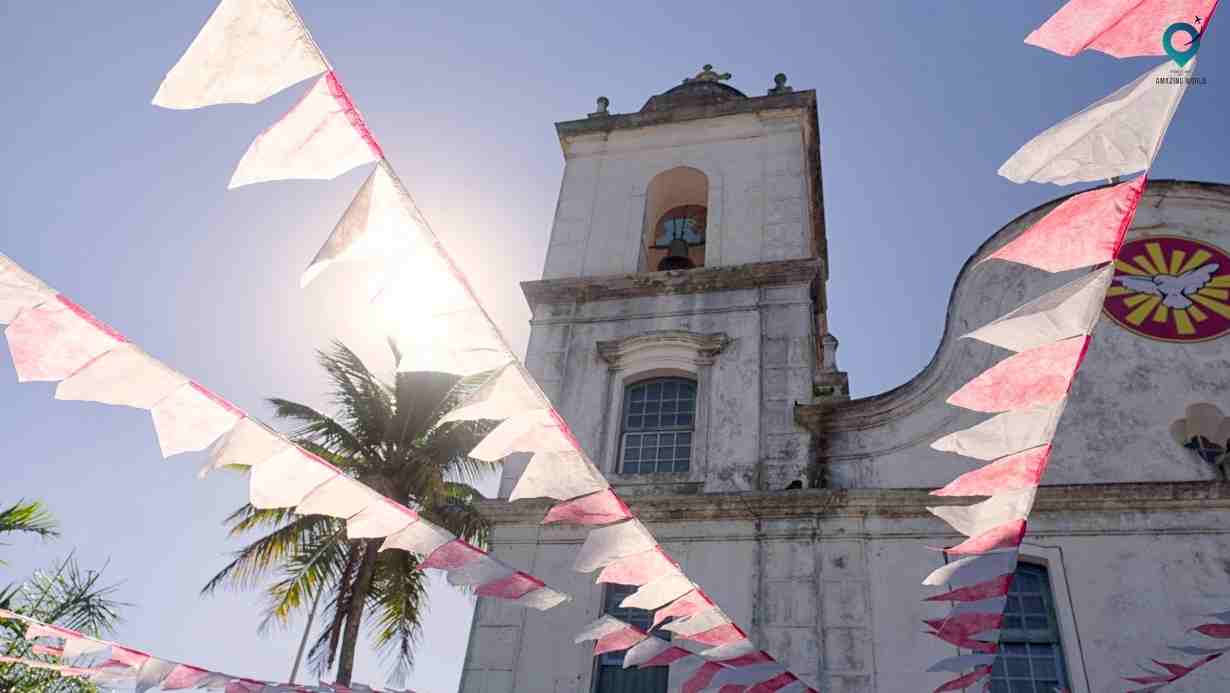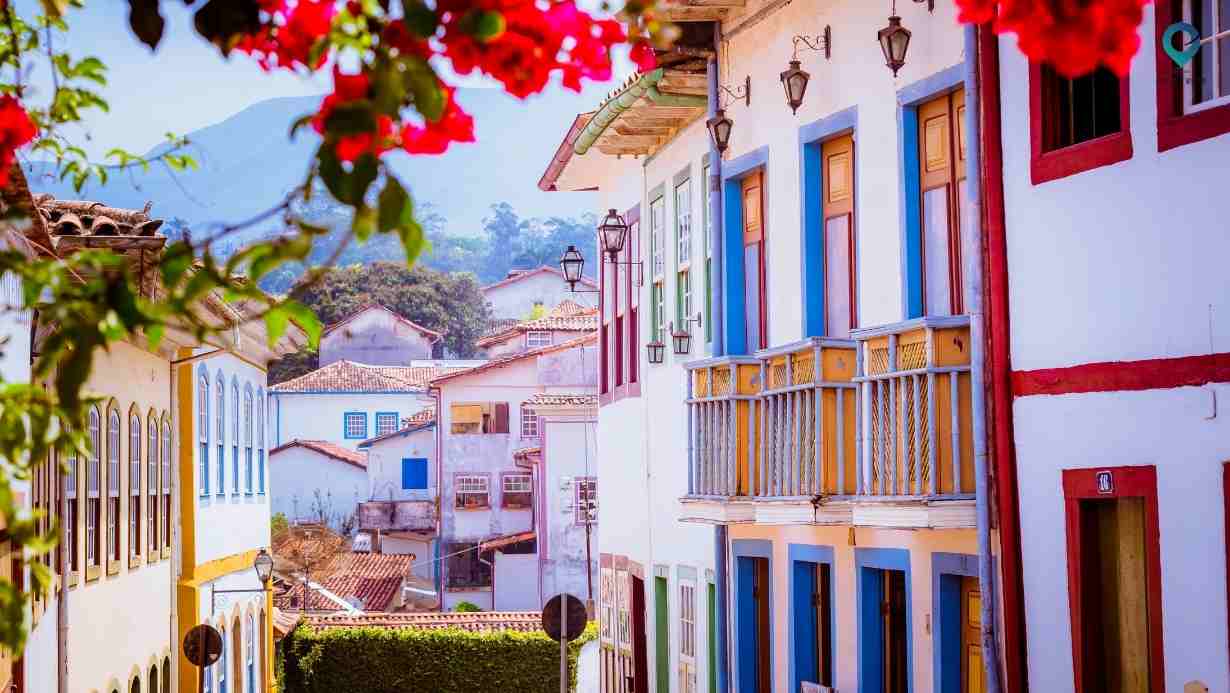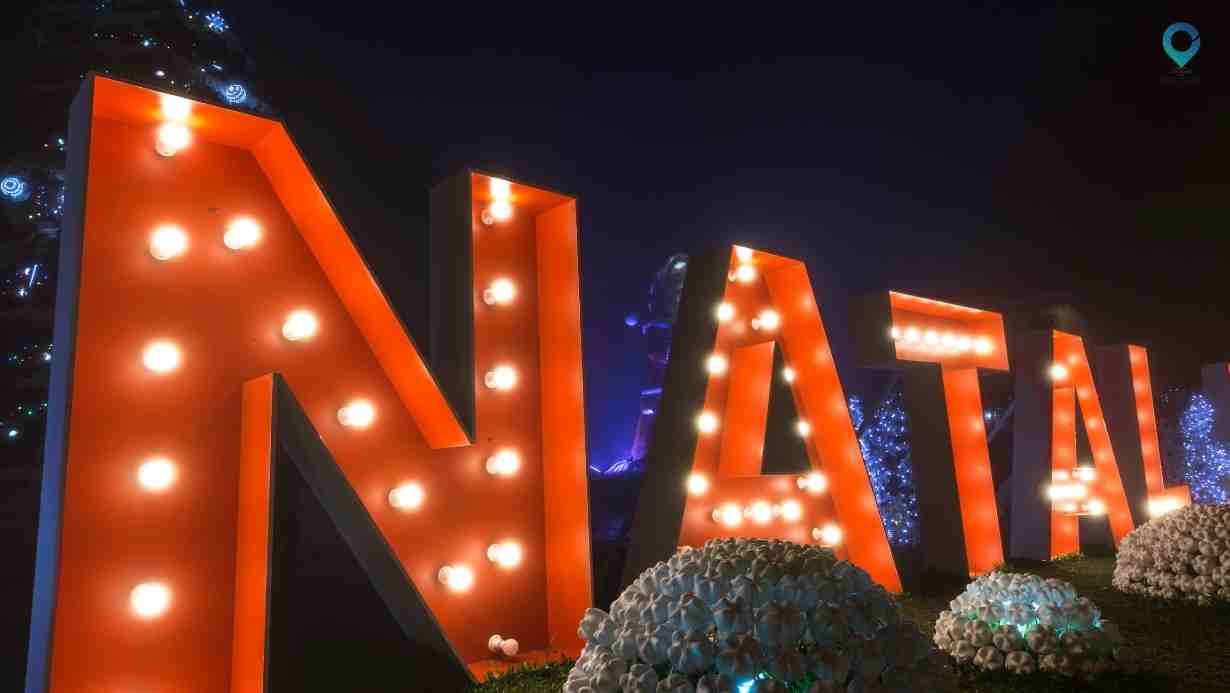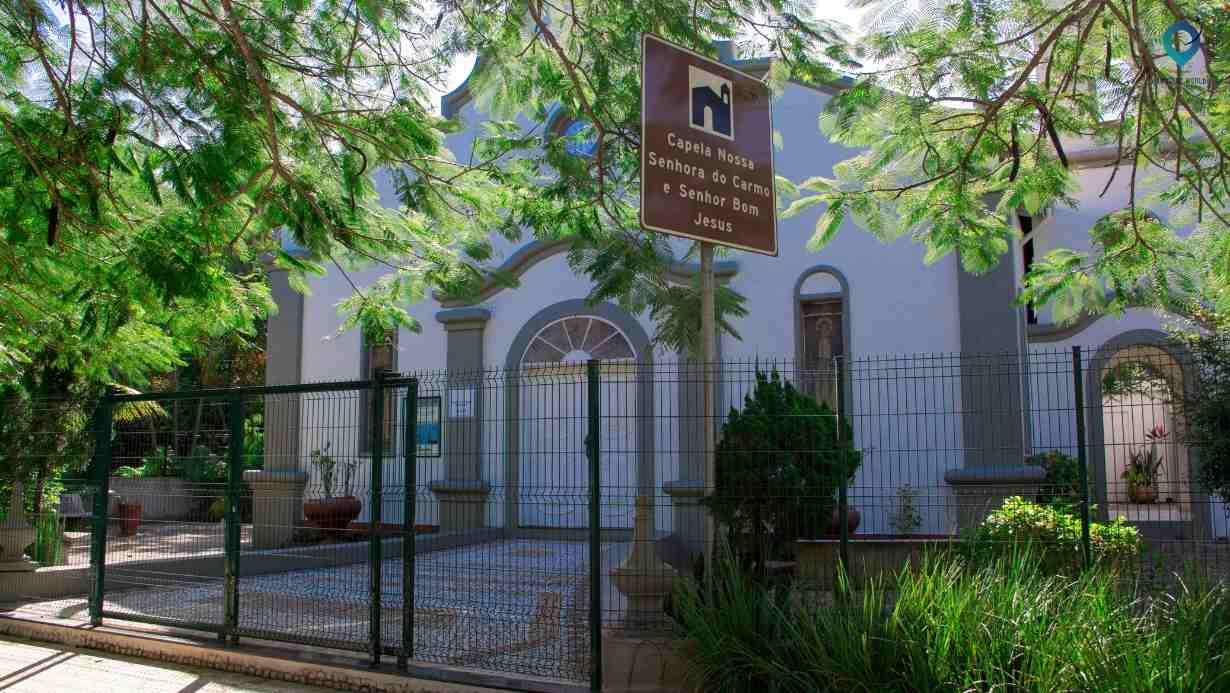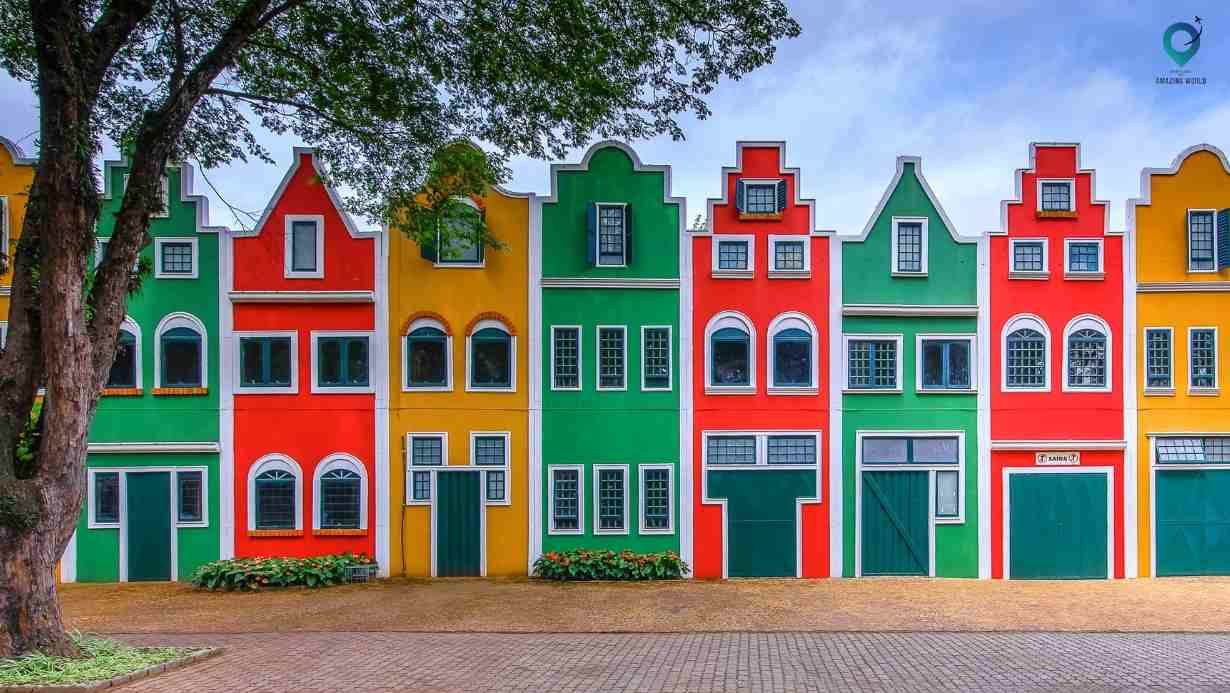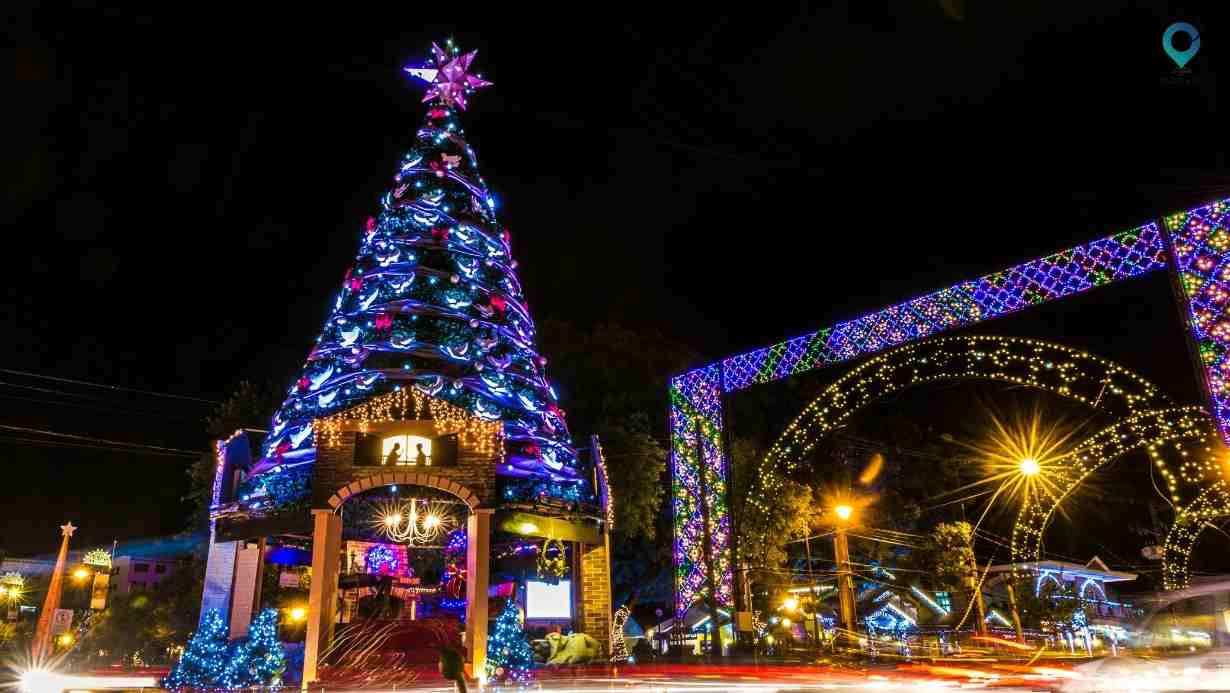Top 20 Festivals In Brazil That You Have To Know
Are you ready to immerse yourself in a vibrant tapestry of Brazilian culture and celebrations? Brazil, a country known for its rich diversity, offers a kaleidoscope of festivals that embody its soul and spirit.
From the pulsating rhythms of Carnival in Rio de Janeiro to the enchanting floral displays of Expoflora in Holambra, each festival paints a vivid portrait of Brazil’s heritage and traditions.
In this article, we embark on a journey through the top 20 festivals that define Brazil, delving into a colorful mosaic of religious observances, cinematic artistry, folklore showcases, and community celebrations.
Join us as we explore these cultural gems that encapsulate the essence of Brazil, showcasing its diverse tapestry of traditions and joyous revelries.
“If you are looking for the best hotel and flight deals for your next vacation, then we recommend booking your bundled flight and hotel through hotwire.com.“
1. Carnival (Rio de Janeiro)
Carnival in Rio de Janeiro is an electrifying, globally renowned festival celebrated annually before Lent, attracting millions of locals and tourists alike. This vibrant event embodies the essence of Brazilian culture, combining music, dance, parades, and colorful costumes in a grand celebration that lasts for several days.
History and Tradition
- Roots and Origins: Carnival traces its roots back to ancient Roman and Greek festivals, evolving over time and blending with indigenous Brazilian and African cultural elements.
- Evolution in Rio: The modern Rio Carnival evolved in the 19th century, influenced by various cultural traditions, including Portuguese, African, and indigenous Brazilian customs.
Samba Schools and Parades
- Samba Schools: The heart of Rio’s Carnival lies in its samba schools, community-based organizations that compete in dazzling parades at the Sambadrome.
- Parade Competition: These schools craft elaborate floats, costumes, and choreographies, competing fiercely in various categories for the prestigious championship.
Music and Dance
- Samba Music: The infectious rhythm of samba music permeates the air during Carnival, inviting everyone to join in the celebration.
- Samba Dance: Intricate samba dance performances, characterized by energetic movements and vibrant costumes, captivate audiences.
Street Parties and Blocos
- Blocos: Throughout the city, vibrant street parties known as “blocos” take place, featuring music, dance, and revelry in various neighborhoods.
- Diverse Participation: These blocos cater to diverse tastes, showcasing different music genres and themes, ensuring there’s something for everyone.
Cultural Significance
- Unity and Diversity: Carnival symbolizes Brazil’s rich cultural diversity, fostering a sense of unity among people from various backgrounds.
- Expression of Joy and Freedom: It’s a time for Brazilians to express their joy, creativity, and freedom through music, dance, and art.
Economic and Touristic Impact
- Tourism Magnet: Rio Carnival is a major attraction, drawing tourists worldwide, significantly contributing to the city’s economy.
- Job Opportunities: The event generates employment opportunities across sectors, from hospitality to the arts, supporting the local economy.
2. Festa Junina (Nationwide)
Festa Junina is a vibrant and traditional Brazilian festival celebrated across the country, mainly during June. This festivity pays homage to rural life, folklore, and Catholic saints, blending indigenous, European, and African cultural elements into a colorful celebration.
Origins and Tradition
- Religious Origins: Festa Junina has its roots in Catholic traditions, particularly honoring Saints Anthony, John the Baptist, and Peter, with festivities held around their feast days in June.
- Rural Influence: The festival celebrates rural life, harvest seasons, and rural traditions, often held in rural areas and neighborhoods, featuring bonfires and rustic decorations.
Typical Elements and Customs
- Decor and Costumes: Colorful decorations, rustic attire like checkered shirts, straw hats, and dresses, contribute to the festive ambiance.
- Traditional Foods: Traditional dishes such as corn-based treats (like pamonha and canjica), sweet popcorn, and mulled wine (quentão) are central to Festa Junina.
Dance and Music
- Quadrilha Dance: The quadrille dance, similar to square dancing, is a significant part of Festa Junina, performed in pairs or groups following choreographed routines.
- Music and Forró: Forró music, characterized by its lively rhythms, plays a prominent role, energizing participants to dance throughout the festivities.
Community Celebrations
- Community Involvement: Festa Junina is an event that fosters community participation, with schools, churches, and neighborhoods organizing their celebrations.
- Games and Activities: Traditional games like sack races, tug-of-war (corrida de Saco and puxa-saco), and fishing for prizes (pescaria) entertain attendees of all ages.
3. Bumba Meu Boi (Maranhão)
Bumba Meu Boi is a folk festival deeply rooted in Maranhão’s cultural heritage, combining African, Indigenous, and European influences. This celebration revolves around the enactment of a captivating tale involving music, dance, and storytelling.
Myth and Performance
- Cultural Story: The festival narrates a tale often centered around the death and resurrection of a bull, featuring characters, music, and elaborate costumes.
- Colorful Performances: Colorful costumes, masks, and vibrant performances by dancers, singers, and musicians bring the story to life.
Cultural Diversity and Influence
- African and Indigenous Roots: Bumba Meu Boi showcases a blend of African rhythms, indigenous elements, and Portuguese influences, reflecting Brazil’s diverse heritage.
- Variations and Styles: Different regions of Maranhão have their unique versions and styles of the Bumba Meu Boi celebration.
Role of Music and Dance
- Musical Diversity: The festival boasts a rich musical repertoire, featuring instruments like drums, flutes, and strings, creating a captivating and rhythmic atmosphere.
- Dynamic Performances: Dancers exhibit intricate choreography, portraying characters from the story with lively movements and expressions.
Festive Spirit and Community Engagement
- Celebratory Atmosphere: Bumba Meu Boi fosters a joyous and celebratory mood, inviting locals and visitors to partake in the festivities.
- Community Bonding: The festival strengthens community bonds, with people coming together to celebrate their cultural heritage.
4. Parintins Folklore Festival (Amazonas)
The Parintins Folklore Festival, also known as “Festival de Parintins,” is an extravagant folk celebration held annually in the city of Parintins, Amazonas. This festival is a vibrant showcase of folklore, music, and theatrical performances deeply rooted in indigenous Amazonian culture.
Origin and Cultural Significance
- Boi-Bumbá Tradition: The festival revolves around the Boi-Bumbá folklore, depicting the mythical story of the resurrection of a bull, representing a blend of indigenous, African, and European influences.
- Spiritual Importance: The event has spiritual significance for locals, symbolizing a cultural narrative and ancestral connections with the Amazonian heritage.
Festival Highlights and Performances
- Batalha dos Bois (Battle of the Bulls): The festival’s centerpiece is the competitive performances by two groups, Garantido (represented by red) and Caprichoso (represented by blue), showcasing their interpretations of the Boi-Bumbá story through elaborate dances, songs, and floats.
- Elaborate Costumes and Choreography: Colorful costumes, extravagant floats, and synchronized choreography captivate audiences, portraying intricate storytelling and cultural elements.
Cultural Immersion and Audience Engagement
- Audience Participation: The festival engages spectators actively, encouraging them to cheer for their favorite group and immerse themselves in the vibrant energy of the performances.
- Cultural Exchange: Parintins Folklore Festival is a platform for sharing Amazonian traditions, providing an opportunity for cultural exchange among locals and visitors.
5. Oktoberfest (Blumenau)
The Oktoberfest in Blumenau is Brazil’s largest and most famous German folk festival, celebrated annually in the city of Blumenau, Santa Catarina. This festival pays homage to German culture, particularly Bavarian traditions, featuring music, dance, food, and, of course, beer.
Historical Roots and Significance
- German Influence: The Oktoberfest in Blumenau originated from German immigrants who settled in the region, bringing their customs and traditions.
- Bavarian Celebration: The festival mirrors the original Oktoberfest in Munich, Germany, showcasing Bavarian culture through music, clothing, and gastronomy.
Festive Elements and Activities
- Beer Culture: The festival offers a vast array of German beers, including traditional Oktoberfest brews, served in large tents accompanied by lively music and dancing.
- Traditional Attire: Participants don traditional Bavarian garments, such as lederhosen for men and dirndls for women, adding to the authentic cultural experience.
Cultural Integration and Entertainment
- Live Music and Performances: Live bands play traditional German music, encouraging attendees to participate in folk dances like the Schuhplattler and the Polka.
- Cultural Exhibitions: The festival includes exhibitions highlighting German traditions, crafts, and folklore, allowing visitors to delve deeper into German heritage.
Economic Impact and Tourism
- Tourist Magnet: The Oktoberfest in Blumenau attracts visitors from across Brazil and around the world, contributing significantly to the city’s tourism industry.
- Economic Boost: The festival serves as a major economic driver, generating revenue for local businesses, hotels, and restaurants.
6. Rock in Rio (Rio de Janeiro)
Rock in Rio is a legendary music festival that originated in Rio de Janeiro, Brazil. Since its inception in 1985, this internationally acclaimed event has grown into one of the largest music festivals globally, attracting top-notch artists and music enthusiasts from around the world.
History and Significance
- Inaugural Event: The first Rock in Rio festival took place in 1985, featuring renowned artists like Queen, AC/DC, and Iron Maiden, among others.
- Global Impact: The festival gained immense popularity, earning its reputation as a major music event that transcends borders, drawing massive crowds and worldwide attention.
Musical Extravaganza
- Diverse Lineup: Rock in Rio showcases a diverse lineup of musical genres, not limited to rock but embracing pop, electronic, and other music styles, catering to a broad spectrum of tastes.
- Iconic Performances: The festival is known for hosting iconic performances by legendary musicians and bands, creating unforgettable moments for attendees.
Cultural Experience and Innovation
- Cultural Exchange: Rock in Rio promotes cultural exchange, uniting people from different backgrounds and nationalities through the universal language of music.
- Environmental Initiatives: The festival emphasizes sustainability, incorporating eco-friendly practices and advocating environmental awareness among attendees.
Impact on Tourism and Economy
- Tourist Attraction: Rock in Rio draws massive tourism to Rio de Janeiro, boosting the city’s economy and local businesses during the festival period.
- Economic Boost: The event generates revenue not only through ticket sales but also from merchandise, food vendors, and associated tourism activities.
7. São João Festival (Northeast Region)
The São João Festival is a traditional celebration in the Northeast Region of Brazil, paying homage to Saint John the Baptist, marked by vibrant festivities showcasing the region’s rich cultural heritage.
Cultural Roots and Traditions
- Religious Significance: São João Festival honors Saint John the Baptist and is celebrated with fervor, blending Catholic traditions with indigenous and rural customs.
- Rural Influence: The festival reflects rural life and agricultural traditions, with rituals and customs linked to the harvest season.
Festive Elements and Customs
- Bonfires and Decorations: Celebrations include bonfires, colorful decorations, and rustic ornaments, creating a festive atmosphere in towns and villages.
- Traditional Foods: Specialties like corn-based dishes (such as Canjica and pamonha), sweet treats, and typical beverages like quentão are integral to the festivities.
Quadrilha Dance and Music
- Quadrilha Performances: The Quadrilha dance, akin to square dancing, is a highlight of São João, with participants dressed in traditional attire performing intricate choreography.
- Forró Music: Forró music sets the tone for the celebrations, featuring lively rhythms and melodies, inviting people to dance and revel in the festivities.
Community Engagement and Unity
- Community Celebrations: São João Festival fosters community participation, with neighborhoods and towns organizing their celebrations, featuring music, dance, and cultural displays.
- Social Bonding: The festival strengthens social bonds, bringing families and communities together to partake in joyful celebrations and share cultural experiences.
8. Boi Bumbá Festival (Pará)
The Boi Bumbá Festival is a vibrant and culturally significant celebration held in Pará, Brazil. It is deeply rooted in folklore and traditions, showcasing a colorful spectacle that blends indigenous, African, and European influences.
Cultural Roots and Origins
- Folklore and Tradition: The festival centers around the Boi-Bumbá folklore, depicting the tale of a bull’s death and resurrection, symbolizing the cultural fusion of diverse influences.
- Regional Variations: Different regions of Pará have their versions of the Boi Bumbá, each with its unique interpretations, music, and performances.
Festive Highlights and Performances
- Elaborate Costumes and Dances: Colorful costumes, elaborate masks, and vibrant dances characterize the performances, portraying the captivating storyline and cultural richness.
- Music and Rhythms: Boi Bumbá showcases a diverse musical repertoire, blending indigenous rhythms, African beats, and European melodies, creating an immersive experience for spectators.
Community Participation and Symbolism
- Community Engagement: The festival involves active participation from local communities, fostering unity and a sense of belonging.
- Symbolism and Rituals: The performances often carry symbolic rituals, reflecting themes of life, death, and rebirth while celebrating cultural heritage.
9. Lavagem do Bonfim (Salvador)
Lavagem do Bonfim is a traditional and religious festival held in Salvador, Bahia, renowned for its cultural significance and vibrant processions.
Religious Significance
- Catholic Tradition: The festival pays homage to Senhor do Bonfim, a Catholic saint highly revered in Bahia, and involves religious rituals, prayers, and processions.
- Washing of the Steps: A central ritual involves devotees washing the steps of the Bonfim Church, a symbolic act of cleansing and renewal.
Processions and Cultural Displays
- Colorful Processions: Lavagem do Bonfim features colorful processions, where participants, dressed in traditional attire, parade through the streets carrying flowers and offering prayers.
- Capoeira and Music: Cultural elements like capoeira performances and traditional music accompany the procession, adding to the festive ambiance.
Community Involvement and Unity
- Community Engagement: The festival fosters community involvement, bringing together people from various backgrounds and neighborhoods to partake in the religious and cultural festivities.
- Celebration of Bahian Culture: Lavagem do Bonfim serves as a platform to celebrate and showcase Bahian culture, traditions, and spiritual beliefs.
10. Cirio de Nazaré (Belém)
The Cirio de Nazaré is one of Brazil’s largest religious events, held in Belém, Pará, dedicated to Nossa Senhora de Nazaré (Our Lady of Nazareth), the patron saint of the Amazon region.
Religious Tradition and Devotion
- Spiritual Importance: The festival venerates Nossa Senhora de Nazaré, drawing devout Catholics from across Brazil who gather to pay homage and seek blessings.
- Procession of the Statue: The highlight of Cirio de Nazaré is the grand procession where the image of the Virgin Mary is carried through the streets, accompanied by multitudes of devotees.
Cultural Spectacle and Celebrations
- Massive Gatherings: The festival attracts enormous crowds, creating a vibrant and celebratory atmosphere filled with prayers, hymns, and expressions of faith.
- Folkloric Elements: The procession incorporates folklore and traditional elements, showcasing Amazonian cultural aspects and indigenous influences.
Economic Impact and Community Bonds
- Economic Influence: Cirio de Nazaré significantly impacts Belém’s economy, with businesses, vendors, and tourism thriving during the festival.
- Community Unity: The event fosters a sense of unity among locals, strengthening community bonds through shared faith and cultural heritage.
11. Festival de Gramado (Rio Grande do Sul)
The Festival de Gramado is a renowned international film festival held annually in Gramado, Rio Grande do Sul, attracting filmmakers, artists, and movie enthusiasts from around the world.
Cultural Significance
- Film Celebration: The festival showcases a diverse selection of national and international films, promoting cinematic artistry and cultural exchange.
- Award Ceremonies: It includes award ceremonies recognizing outstanding films and contributions to the cinematic industry, fostering artistic appreciation and recognition.
International Participation and Film Screenings
- Global Participation: The festival attracts filmmakers, actors, and industry professionals worldwide, offering a platform for networking and collaboration.
- Film Screenings: It features screenings of various film genres, including features, documentaries, and short films, offering a rich tapestry of cinematic experiences.
Cultural Exchange and Audience Engagement
- Cultural Diversity: Festival de Gramado facilitates cultural exchange through the exploration of diverse cinematic perspectives and storytelling techniques.
- Audience Interaction: Attendees engage with filmmakers through Q&A sessions, workshops, and discussions, creating an interactive and enriching experience.
12. Festas do Divino Espírito Santo (Alcântara)
The Festas do Divino Espírito Santo is a religious and cultural celebration observed in Alcântara, Maranhão, honoring the Holy Spirit with colorful processions and traditional rituals.
Religious Observance and Traditions
- Spiritual Significance: The festival venerates the Holy Spirit and features religious rituals, prayers, and processions reflecting strong Catholic devotion.
- Cultural Customs: It encompasses a blend of indigenous, African, and Portuguese traditions, creating a distinctive cultural tapestry.
Symbolic Elements and Processions
- Imperial Symbols: Festas do Divino Espírito Santo includes the crowning of an emperor and empress representing the divine spirit, symbolizing grace and charity.
- Processions and Feasting: Colorful processions, adorned with flags and banners, accompany communal feasts and traditional music, fostering community spirit.
13. Semana Santa (Ouro Preto)
Semana Santa, or Holy Week, is a significant religious event observed in Ouro Preto, Minas Gerais, marking the events leading up to Easter Sunday in the Catholic calendar.
Religious Observances and Rituals
- Easter Celebrations: Semana Santa commemorates the Passion, Death, and Resurrection of Jesus Christ, with a series of religious services, processions, and reenactments.
- Ceremonial Events: The week includes symbolic rituals like the Stations of the Cross, Last Supper reenactments, and the Via Crucis (Way of the Cross) processions.
Cultural Heritage and Artistic Expressions
- Artistic Representations: The week features elaborate decorations, religious artworks, and displays depicting scenes from the Passion of Christ, showcasing artistic expressions.
- Processions and Traditions: Processions, accompanied by somber music and religious chants, traverse the historic streets, evoking a sense of solemnity and reflection.
14. Festival de Parintins (Amazonas)
The Festival de Parintins, also known as the Boi-Bumbá Festival, is a grand cultural celebration held in Parintins, Amazonas, featuring vibrant displays of folklore, music, and theatrical performances.
Boi-Bumbá Tradition and Symbolism
- Cultural Narrative: The festival revolves around the Boi-Bumbá folklore, portraying the tale of the death and resurrection of a bull, representing the amalgamation of diverse cultural influences.
- Colorful Spectacle: The festival is characterized by elaborate costumes, mesmerizing dances, and spirited performances by competing groups, Garantido (red) and Caprichoso (blue).
Spectacular Performances and Narratives
- Batalha dos Bois (Battle of the Bulls): The highlight of Festival de Parintins is the competitive performances by the Garantido and Caprichoso groups, showcasing creative choreography, music, and floats.
- Storytelling through Dance and Music: The festival unfolds a captivating storyline through synchronized dances, evocative music, and elaborate stagecraft, captivating the audience.
15. Natal Luz (Gramado)
Natal Luz is a dazzling Christmas-themed festival celebrated in Gramado, Rio Grande do Sul, renowned for its enchanting light displays, performances, and holiday spirit.
Christmas Celebrations and Festive Atmosphere
- Festive Lights: Natal Luz illuminates Gramado with enchanting light displays, transforming the city into a magical wonderland, captivating locals and visitors alike.
- Holiday Performances: The festival features theatrical presentations, concerts, and performances highlighting Christmas-themed music and stories.
Cultural Displays and Activities
- Cultural Shows: Natal Luz includes cultural shows depicting Christmas traditions, portraying the Nativity, and showcasing Brazilian and international holiday customs.
- Street Parades and Events: The festival hosts joyful street parades, interactive events, and activities, fostering a sense of community celebration and holiday cheer.
16. Festas do Senhor Bom Jesus de Iguape (Iguape)
Festas do Senhor Bom Jesus de Iguape is an annual religious festival held in Iguape, São Paulo, venerating Senhor Bom Jesus, the patron saint of the city.
Religious Devotion and Traditions
- Religious Observance: The festival involves religious rituals, processions, and masses dedicated to Senhor Bom Jesus, attracting devoted pilgrims and worshippers.
- Historical Significance: It commemorates historical events and venerates the religious patron, fostering a sense of spiritual devotion among participants.
Cultural Elements and Celebrations
- Traditional Processions: The festival includes grand processions carrying the image of Senhor Bom Jesus through the streets, accompanied by prayers and religious hymns.
- Community Celebrations: Festas do Senhor Bom Jesus de Iguape encourages communal celebrations, featuring cultural displays, local cuisine, and music, promoting cultural heritage.
17. Expoflora (Holambra)
Expoflora is an annual flower and garden festival held in Holambra, São Paulo, renowned for its stunning floral displays, exhibitions, and cultural activities.
Floral Displays and Exhibitions
- Breathtaking Gardens: Expoflora showcases meticulously arranged flower gardens, featuring a diverse array of local and exotic flowers, attracting gardening enthusiasts.
- Flower Exhibitions: The festival hosts exhibitions displaying various floral species, offering insights into horticulture and gardening techniques.
Cultural Events and Attractions
- Cultural Shows: Expoflora includes cultural performances, music, and dance showcasing Brazilian and Dutch traditions, reflecting Holambra’s Dutch heritage.
- Crafts and Cuisine: Visitors can explore artisanal crafts, sample local cuisine, and indulge in Dutch delicacies amidst a festive ambiance.
18. Círio de Nossa Senhora de Nazaré (Belém)
Círio de Nossa Senhora de Nazaré is one of Brazil’s largest religious processions, held in Belém, Pará, venerating Nossa Senhora de Nazaré, the patron saint of Pará.
Religious Observance and Procession
- Devotional Procession: The festival features a grand procession, where a statue of Nossa Senhora de Nazaré is carried through the streets, drawing thousands of faithful devotees.
- Spiritual Pilgrimage: Pilgrims from across Brazil participate, seeking blessings and expressing their devotion to the revered saint.
Cultural Significance and Traditions
- Cultural Celebrations: The festival blends religious observances with cultural traditions, including traditional music, dances, and rituals, reflecting the region’s heritage.
- Community Participation: Círio de Nazaré fosters community bonds, uniting people from diverse backgrounds in a shared celebration of faith and culture.
19. Festival de Cinema de Gramado (Rio Grande do Sul)
The Festival de Cinema de Gramado is an esteemed film festival held in Gramado, Rio Grande do Sul, showcasing national and international cinema.
Cinematic Showcase and Awards
- Film Screenings: The festival presents a curated selection of Brazilian and international films, providing a platform for emerging filmmakers and established directors.
- Jury Awards: Distinguished films are honored with prestigious awards, recognizing excellence in various categories, contributing to the elevation of cinematic artistry.
Cultural Exchange and Film Appreciation
- Cultural Exchange: Festival de Cinema de Gramado encourages cultural exchange, allowing audiences to appreciate diverse cinematic narratives and storytelling techniques.
- Cinematic Dialogues: The event fosters discussions, workshops, and seminars, promoting discourse on filmmaking, industry trends, and storytelling methods.
20. Festival Folclórico de Caruaru (Pernambuco)
The Festival Folclórico de Caruaru is a lively folk festival celebrated in Caruaru, Pernambuco, showcasing vibrant Northeastern Brazilian folklore, music, and traditions.
Folkloric Performances and Music
- Northeastern Folklore: The festival features captivating folklore performances, including traditional dance forms like Forró, Xaxado, and Quadrilha, showcasing the region’s cultural richness.
- Live Music: Musicians perform authentic Northeastern Brazilian music, adding to the festive ambiance with rhythms like Baião and Frevo.
Crafts and Culinary Delights
- Craftsmanship: Festival Folclórico de Caruaru highlights local craftsmanship, displaying artisanal works, clay pottery, and intricate handicrafts, demonstrating regional artistry.
- Local Cuisine: Visitors indulge in Northeastern delicacies, savoring dishes like tapioca, bolo de rolo, and carne de sol, experiencing the flavors of Pernambuco.
How much did you like Our detailed Celebrating Culture: Top 20 Festivals that Define Brazil? Review Also, please share these Blogs with your friends on social media.
Recommended

Meet David Hoper, a passionate travel Blog writer with 7+ years of experience in travel content. Through his exemplary storytelling and engaging narratives, he shares his experiences and brings destinations to life. With a keen eye for detail and a love for exploration, he has cultivated a diverse portfolio of travel blogs that inspire and inform readers worldwide.
